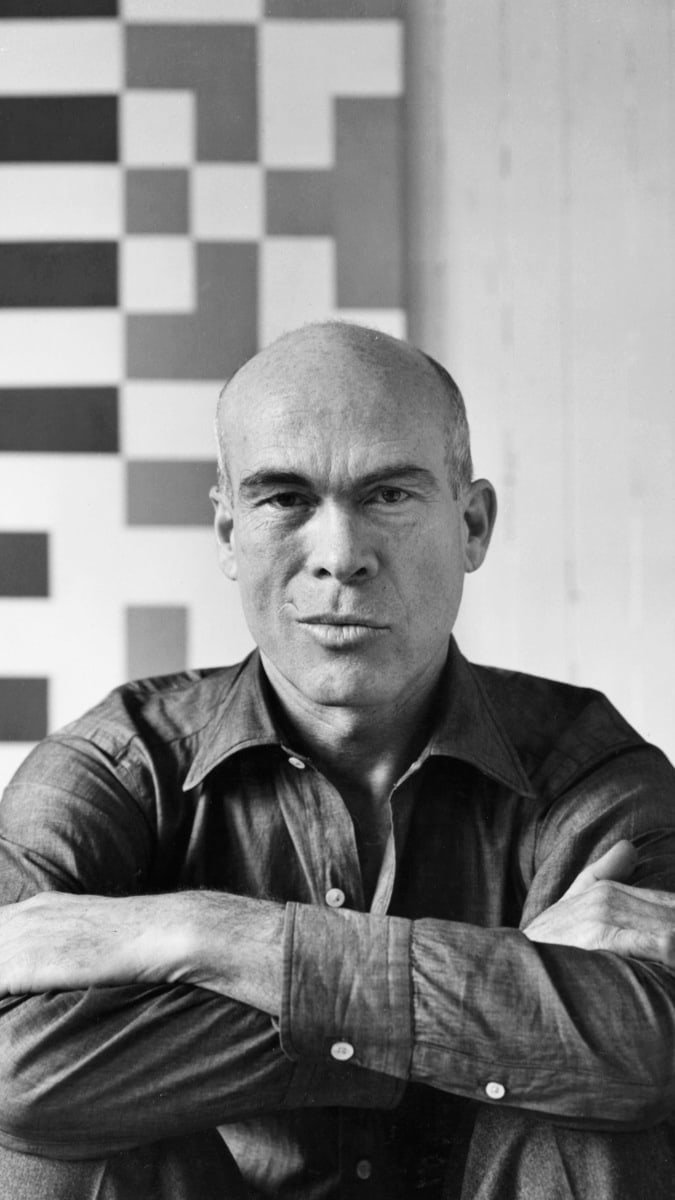Leon Polk Smith
American, 1906–1996
Leon Polk Smith was a painter heralded for his lifelong commitment to simplified shapes, brilliant colors and minimal, pressurized compositions. Born outside Chickasha in what would become Oklahoma, Smith was educated in New York City in the 1930s. He later attributed his encounters with the works of Piet Mondrian and Constantin Brancusi during these years as formative to his artistic development. In his hard-edged paintings, Smith would push the geometry of Mondrian into curved compositions that celebrated optical tenseness and restraint. From his first solo exhibition in New York City in 1941 through his death in 1996, Smith’s paintings–frequently on shaped or multipart canvases–exuded a buoyancy that was identified as quintessentially American. Writing in the New York Times, Roberta Smith analyzed his relationship to Americanness, connecting the overt simplicity, the evocation of the expansive landscape, the balance of boldness and pensiveness to what she called a “slightly unhinged optimism.”
Smith has been the subject of numerous retrospectives and his work resides in major institutional collections including the Art Institute of Chicago, the Brooklyn Museum, Crystal Bridges Museum of American Art, the Solomon R. Guggenheim Museum of Art, the Hirshhorn Museum, L.A. County Museum of Art, the Metropolitan Museum of Art, the Museum of Modern Art, the National Gallery of Art and the Whitney Museum of American Art.
Courtesy Richard Gray Gallery
Credit: Gene Pyle


